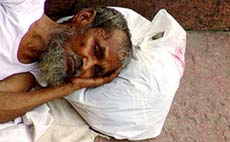
The Roots of Child Labor
Source: The New Internationalist
It isn’t really a factory. The ‘finishing unit’, where garments are stacked in boxes ready for shipment to Britain and America, is in the lower story of an extensive private house enclosed by a high stone wall in the Mirpur district of Dhaka. The stairs are piled with cardboard containers, so it is almost impossible to reach the upstairs apartment.
Here, the last touches are put to ready-made apparel for export. The workshop is a plain, windowless room, about 12 or 15 metres square. There are 45 workers, a majority girls, about half of them under 14. A boy is at a machine sewing buttons. Girls stand at a table, trimming loose threads and checking that the buttons are firm and the zip-fasteners work smoothly. Others stand at old-fashioned domestic ironing boards, from which steam rises in little mushroom-clouds. At a trestle, each garment is carefully folded and then passed to a line of young women who seal it in transparent polythene. Other girls stack them in cardboard cartons. They handle each piece as though it were a tray of eggs. From here, all the material will go to shipping containers for delivery to GAP and Primark in Britain, to Wal-Mart and K-Mart in North America.

